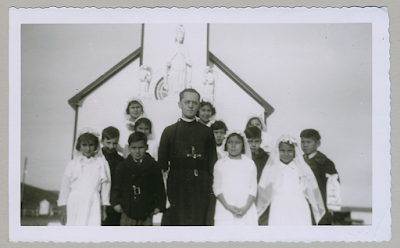
Anglicans in Manitoba
and northwestern Ontario have selected the first Black person to be their
bishop, Jewish women in Winnipeg want to “wage peace” between Israelis and Palestinians,
and 15,000 local Muslims gather for prayer during Eid al-Adha—three of my recent
stories about faith in Manitoba for a religion round-up.
Anglicans in Manitoba
and northwestern Ontario have selected the first Black person to be their
bishop—and the first who was born in Africa. Naboth Manzongo was elected to be
the 14th bishop of the Diocese of Rupert’s Land May 31.
“It’s a burden to be
the first of anything,” he said about becoming the first Black and African
bishop in the diocese, adding he can be an inspiration to Black youth and to
youth from other marginalized communities.
Read my story about Naboth in the Free Press.
Esther Blum doesn’t
know how peace is going to happen between Israel and Palestine. But, she said,
“We gave war a chance for 77 years. Maybe now is the time to give peace the
same amount of time.”
Blum, a member of the
Winnipeg chapter of Women Wage Peace, made that comment to a group of about 25
Jewish seniors at the Remis Luncheon at the Gwen Secter Creative Living Centre a
week ago.
Read my story about Esther and Women Wage Peace in the Free Press.
And around 15,000 local
Muslims converged on the convention centre Friday to mark Eid al-Adha, or the
Feast of Sacrifice.
The event remembers the
story in the Qur’an of Ibrahim’s willingness to obey God by sacrificing his
son, Ishmael. It was held in three sessions to accommodate everyone who came to
pray and hear sermons from Islamic leaders.
Ismael Mukhtar, an imam
at the Grand Mosque, preached about the importance of being willing to follow
God in life and to submit to him.
“As Muslims, we are to
follow the example of Ibrahim, to be willing to sacrifice what is most precious
to us for God,” he told the gathering.
That, he added, is the
essence of Islam, that “we are willing to go to the furthest point of sacrifice
in obedience to the creator.”
Read about the prayer service in the Free Press.









%20Nazifa%20Vukovic,%20Adna%20Mehmedovic,%20Nedzmina%20Mehmedovic.jpeg)